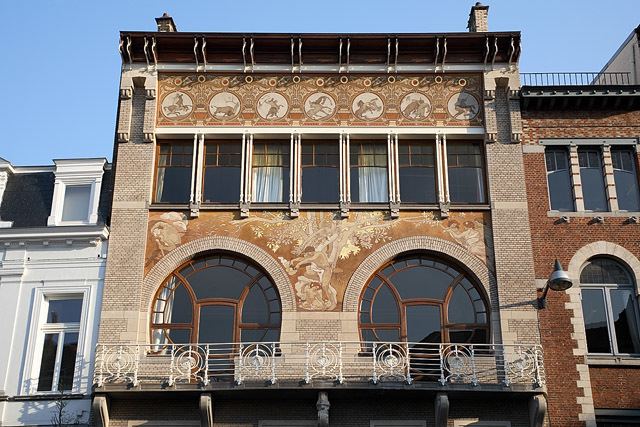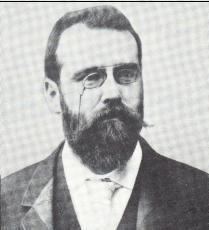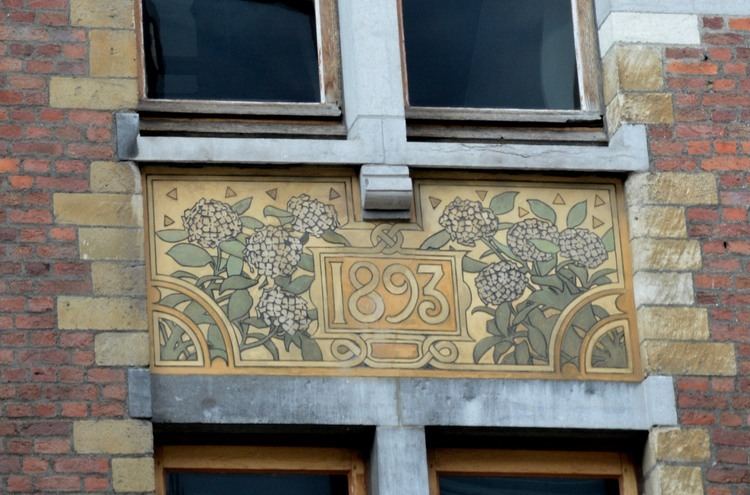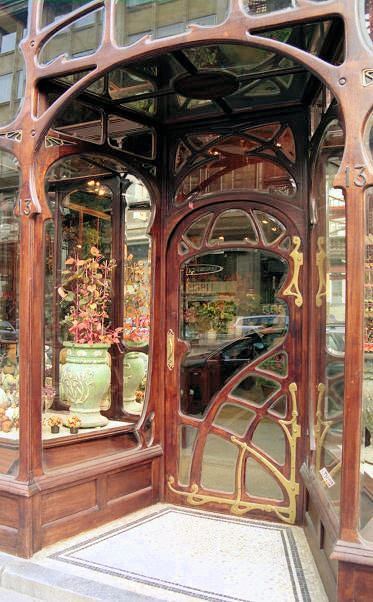Nationality Belgian Occupation Architect | Name Paul Hankar Role Architect | |
 | ||
Buildings Maison Hankar (1893)Chemiserie Niguet (1896)Hotel Ciamberlani (1897) Died January 17, 1901, Brussels, Belgium | ||
Paul hankar architecte
Paul Hankar (11 December 1859 – 17 January 1901) was a Belgian architect and furniture designer, and an innovator in the Art Nouveau style.
Contents
- Paul hankar architecte
- Art nouveau architectuur in elsene huis ciamberlani door paul hankar uit 1897
- Career
- Buildings
- Furniture interiors
- References

Art nouveau architectuur in elsene huis ciamberlani door paul hankar uit 1897
Career

He was born at Frameries, the son of a stonemason. He studied at the Académie Royale des Beaux-Arts in Brussels, where he met fellow student (and future architect) Victor Horta. Like Horta, he closely studied the techniques of forged iron, which he would later use in many of his buildings. He began his career as a designer and sculptor of funeral monuments. From 1879 to 1892 he worked in the office of architect Hendrik Beyaert, where he obtained his architectural training. Under Beyaert, he was chief designer for the Palacio de Chávarri in Bilbao, Spain (1889), constructed for the businessman Víctor Chávarri.

He opened his own office in Brussels in 1893, and began construction of his own house, the Maison Hankar. This and Victor Horta's Hôtel Tassel (constructed at the same time), are considered the first two houses built in the Art Nouveau style. A circa-1894 poster by his friend and frequent collaborator, Adolphe Crespin, advertises Hankar's practice on the Rue Defacqz.

The façade of Maison Hankar expresses the building's structure—the eastern third, containing the entrance and stairs, is offset a half-story from the western two-thirds, containing the public rooms. A three-story projecting box-bay, supported on stone corbels, provides ample light to the second and third floor rooms and a balcony for the fourth. Mural panels by Crespin appear under the windows and in an arcaded frieze at the eaves. The interplay between heavy Renaissance Revival elements and materials versus light Art Nouveau detailing and decoration results in a vivid composition.

In 1896, he presented a project for a "Cité des Artistes" ("City of Artists") for the seaside town of Westende, an artists' cooperative with housing and studios. Although the project never was realized, it would later inspire the Darmstadt Artists' Colony in Darmstadt, Germany, and the artists of the Vienna Secession.
For the 1897 World's Fair in Brussels, he contributed to the design of the Congo section, which became known for its full employment of the Art Nouveau. He also lectured on "New Brussels," his vision for an urban redevelopment of the city, that was never realized. Later that year, he participated in the Colonial Exposition at Tervuren, Belgium, where he coordinated the works of several artisans and furniture designers.
He designed a monumental stone bench (1898–99), carved by the Ecausines and Soignies quarries, to be exhibited in the Mine and Metallurgy Section of the Exposition Universelle (1900) in Paris. King Leopold II of Belgium bought the bench at the close of the exposition, and donated it to a park in the Koninginlaan neighborhood of Ostend, where it was installed by 1905. The bench was removed in 1971 to expand a parking lot, and destroyed. Using Hankar's surviving drawings, a replica bench was carved for the park (2003–04), and installed on the same foundations as the original.
He was a professor of engineering at the School of Applied Arts in Schaerbeek (1891–97), and a professor of architectural history at the Institut des Hautes Etudes of the University of Brussels (1897-1901). He worked as editor of L'Emulation (1894–96), a magazine that promoted the Art Nouveau style.
Hankar died in Brussels at age 41.
